Shahaboddin Shamshirband
Comparative analysis of machine learning models for Ammonia Capture of Ionic Liquids
Feb 19, 2020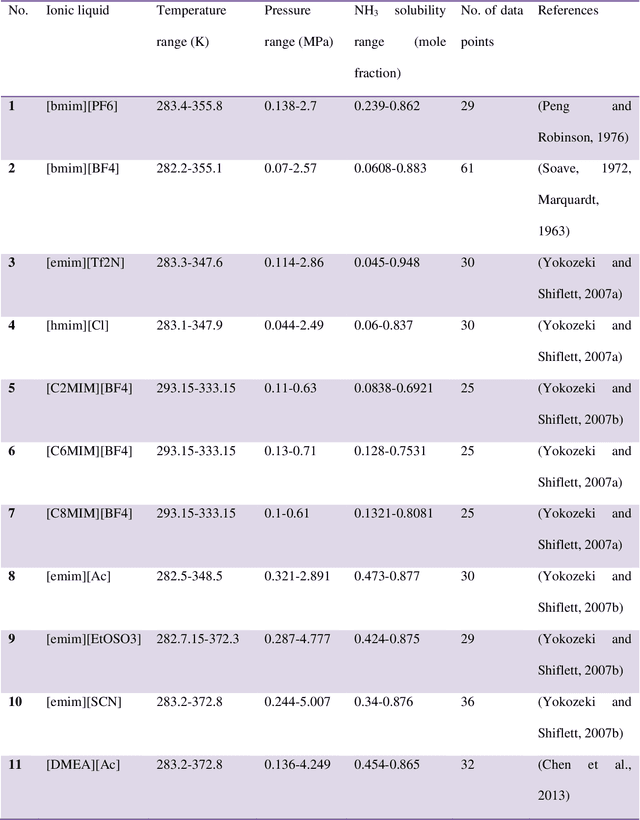
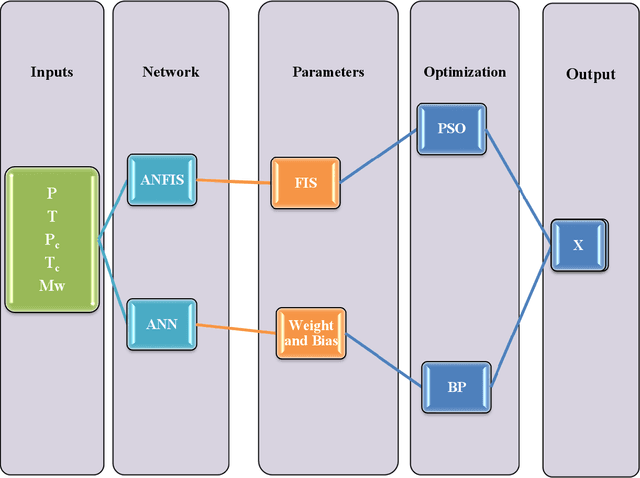
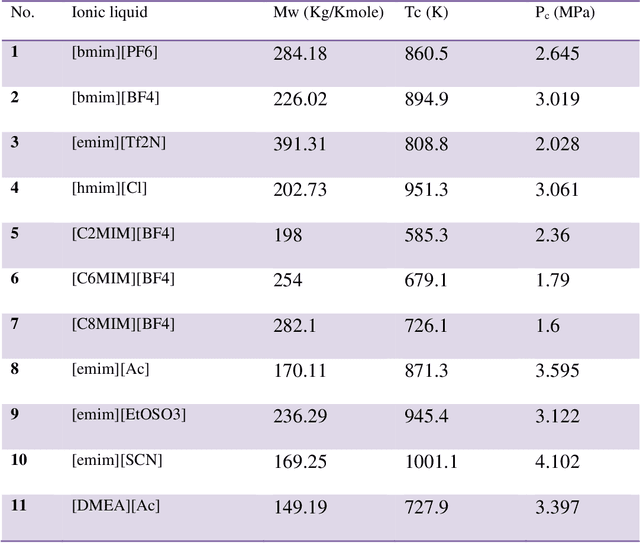
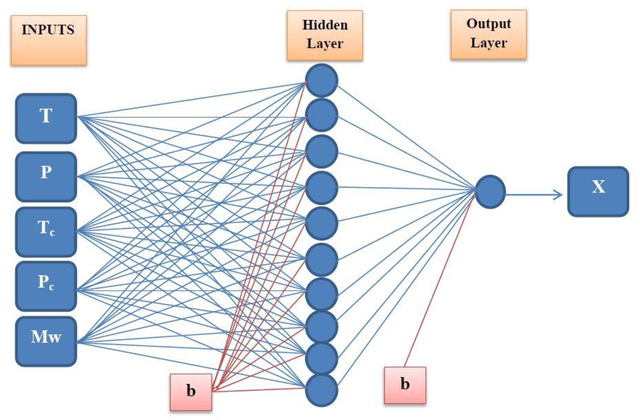
Abstract:Industry uses various solvents in the processes of refrigeration and ventilation. Among them, the Ionic liquids (ILs) as the relatively new solvents, are known for their proven eco-friendly characteristics. In this research, a comprehensive literature review was carried out to deliver an insight into the ILs and the prediction models used for estimating the ammonia solubility in ILs. Furthermore, a number of advanced machine learning methods, i.e. multilayer perceptron (MLP) and a combination of particle swarm optimization (PSO) and adaptive neuro-fuzzy inference system (ANFIS) models are used to estimate the solubility of ammonia in various ionic liquids. Affecting parameters were molecular weight, critical temperature and pressure of ILs. Furthermore, the salability is also predicted using the two-equation of states. Down the line, some comparisons were drawn between experimental and modeling results which is rarely done. The study shows that the equations of states are not able estimate the solubility of ammonia accurately, by contrast, artificial intelligence methods have produced promising results.
Wind speed prediction using a hybrid model of the multi-layer perceptron and whale optimization algorithm
Feb 14, 2020



Abstract:Wind power as a renewable source of energy, has numerous economic, environmental and social benefits. In order to enhance and control renewable wind power, it is vital to utilize models that predict wind speed with high accuracy. Due to neglecting of requirement and significance of data preprocessing and disregarding the inadequacy of using a single predicting model, many traditional models have poor performance in wind speed prediction. In the current study, for predicting wind speed at target stations in the north of Iran, the combination of a multi-layer perceptron model (MLP) with the Whale Optimization Algorithm (WOA) used to build new method (MLP-WOA) with a limited set of data (2004-2014). Then, the MLP-WOA model was utilized at each of the ten target stations, with the nine stations for training and tenth station for testing (namely: Astara, Bandar-E-Anzali, Rasht, Manjil, Jirandeh, Talesh, Kiyashahr, Lahijan, Masuleh, and Deylaman) to increase the accuracy of the subsequent hybrid model. The capability of the hybrid model in wind speed forecasting at each target station was compared with the MLP model without the WOA optimizer. To determine definite results, numerous statistical performances were utilized. For all ten target stations, the MLP-WOA model had precise outcomes than the standalone MLP model. The hybrid model had acceptable performances with lower amounts of the RMSE, SI and RE parameters and higher values of NSE, WI, and KGE parameters. It was concluded that the WOA optimization algorithm can improve the prediction accuracy of MLP model and may be recommended for accurate wind speed prediction.
Evaluation of electrical efficiency of photovoltaic thermal solar collector
Feb 11, 2020



Abstract:Solar energy is a renewable resource of energy that is broadly utilized and has the least emissions among renewable energies. In this study, machine learning methods of artificial neural networks (ANNs), least squares support vector machines (LSSVM), and neuro-fuzzy are used for advancing prediction models for the thermal performance of a photovoltaic-thermal solar collector (PV/T). In the proposed models, the inlet temperature, flow rate, heat, solar radiation, and the sun heat have been considered as the inputs variables. Data set has been extracted through experimental measurements from a novel solar collector system. Different analyses are performed to examine the credibility of the introduced approaches and evaluate their performance. The proposed LSSVM model outperformed ANFIS and ANNs models. LSSVM model is reported suitable when the laboratory measurements are costly and time-consuming, or achieving such values requires sophisticated interpretations.
Intelligent Road Inspection with Advanced Machine Learning; Hybrid Prediction Models for Smart Mobility and Transportation Maintenance Systems
Jan 18, 2020



Abstract:Prediction models in mobility and transportation maintenance systems have been dramatically improved through using machine learning methods. This paper proposes novel machine learning models for intelligent road inspection. The traditional road inspection systems based on the pavement condition index (PCI) are often associated with the critical safety, energy and cost issues. Alternatively, the proposed models utilize surface deflection data from falling weight deflectometer (FWD) tests to predict the PCI. Machine learning methods are the single multi-layer perceptron (MLP) and radial basis function (RBF) neural networks as well as their hybrids, i.e., Levenberg-Marquardt (MLP-LM), scaled conjugate gradient (MLP-SCG), imperialist competitive (RBF-ICA), and genetic algorithms (RBF-GA). Furthermore, the committee machine intelligent systems (CMIS) method was adopted to combine the results and improve the accuracy of the modeling. The results of the analysis have been verified through using four criteria of average percent relative error (APRE), average absolute percent relative error (AAPRE), root mean square error (RMSE), and standard error (SD). The CMIS model outperforms other models with the promising results of APRE=2.3303, AAPRE=11.6768, RMSE=12.0056, and SD=0.0210.
Coronary Artery Disease Diagnosis; Ranking the Significant Features Using Random Trees Model
Jan 16, 2020
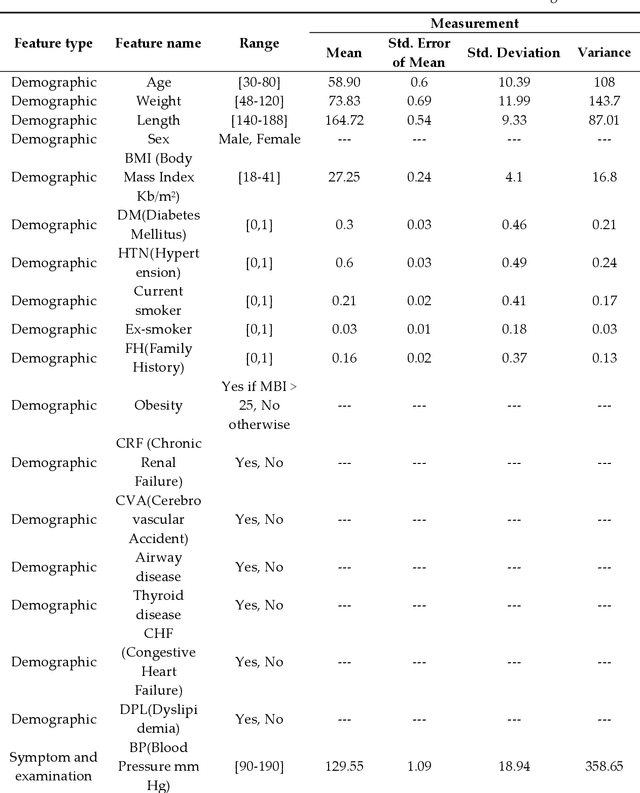
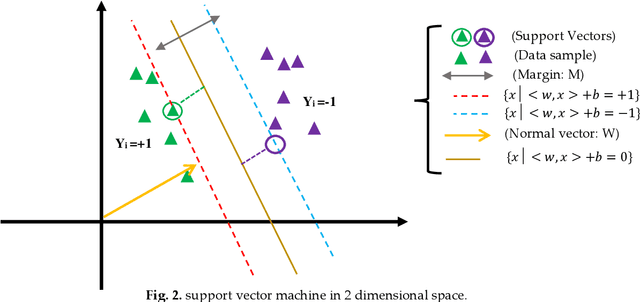

Abstract:Heart disease is one of the most common diseases in middle-aged citizens. Among the vast number of heart diseases, the coronary artery disease (CAD) is considered as a common cardiovascular disease with a high death rate. The most popular tool for diagnosing CAD is the use of medical imaging, e.g., angiography. However, angiography is known for being costly and also associated with a number of side effects. Hence, the purpose of this study is to increase the accuracy of coronary heart disease diagnosis through selecting significant predictive features in order of their ranking. In this study, we propose an integrated method using machine learning. The machine learning methods of random trees (RTs), decision tree of C5.0, support vector machine (SVM), decision tree of Chi-squared automatic interaction detection (CHAID) are used in this study. The proposed method shows promising results and the study confirms that RTs model outperforms other models.
Simulation of Turbulent Flow around a Generic High-Speed Train using Hybrid Models of RANS Numerical Method with Machine Learning
Dec 25, 2019



Abstract:In the present paper, an aerodynamic investigation of a high-speed train is performed. In the first section of this article, a generic high-speed train against a turbulent flow is simulated, numerically. The Reynolds-Averaged Navier-Stokes (RANS) equations combined with the turbulence model are applied to solve incompressible turbulent flow around a high-speed train. Flow structure, velocity and pressure contours and streamlines at some typical wind directions are the most important results of this simulation. The maximum and minimum values are specified and discussed. Also, the pressure coefficient for some critical points on the train surface is evaluated. In the following, the wind direction influence the aerodynamic key parameters as drag, lift, and side forces at the mentioned wind directions are analyzed and compared. Moreover, the effects of velocity changes (50, 60, 70, 80 and 90 m/s) are estimated and compared on the above flow and aerodynamic parameters. In the second section of the paper, various data-driven methods including Gene Expression Programming (GEP), Gaussian Process Regression (GPR), and random forest (RF), are applied for predicting output parameters. So, drag, lift, and side forces and also minimum and a maximum of pressure coefficients for mentioned wind directions and velocity are predicted and compared using statistical parameters. Obtained results indicated that RF in all coefficients of wind direction and most coefficients of free stream velocity provided the most accurate predictions. As a conclusion, RF may be recommended for the prediction of aerodynamic coefficients.
Applying ANN, ANFIS, and LSSVM Models for Estimation of Acid Solvent Solubility in Supercritical CO$_2$
Nov 21, 2019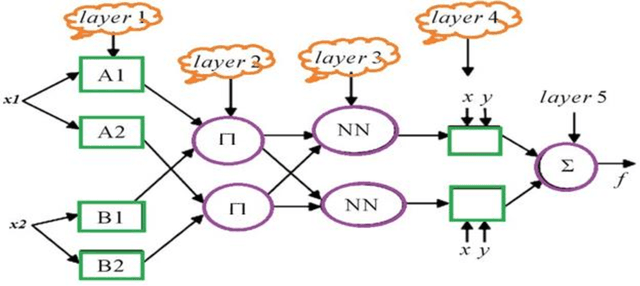
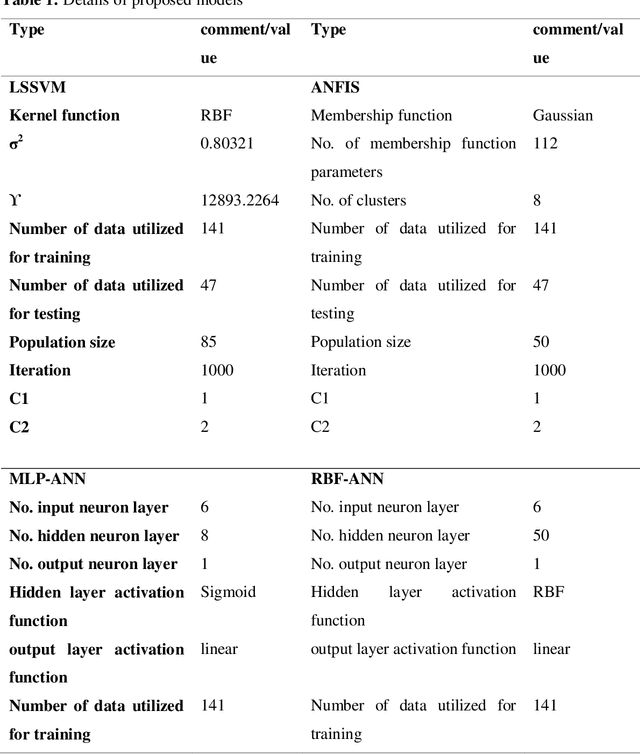
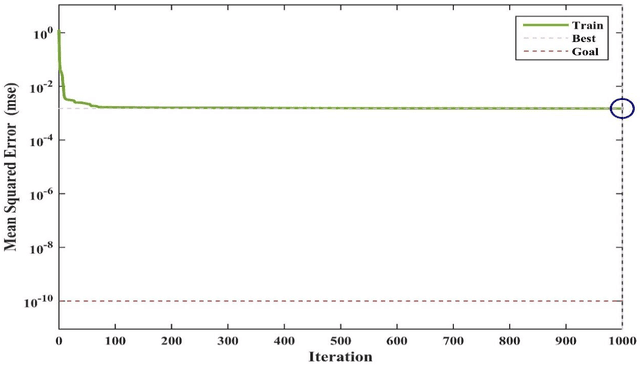
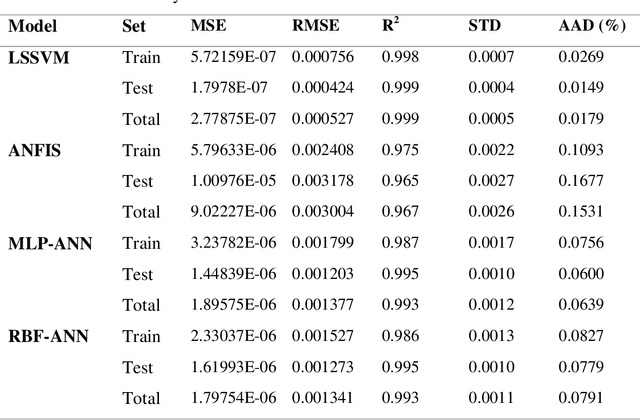
Abstract:In the present work, a novel and the robust computational investigation is carried out to estimate solubility of different acids in supercritical carbon dioxide. Four different algorithms such as radial basis function artificial neural network, Multi-layer Perceptron (MLP) artificial neural network (ANN), Least squares support vector machine (LSSVM) and adaptive neuro-fuzzy inference system (ANFIS) are developed to predict the solubility of different acids in carbon dioxide based on the temperature, pressure, hydrogen number, carbon number, molecular weight, and acid dissociation constant of acid. In the purpose of best evaluation of proposed models, different graphical and statistical analyses and also a novel sensitivity analysis are carried out. The present study proposed the great manners for best acid solubility estimation in supercritical carbon dioxide, which can be helpful for engineers and chemists to predict operational conditions in industries.
Developing an ANFIS PSO Model to Estimate Mercury Emission in Combustion Flue Gases
Sep 16, 2019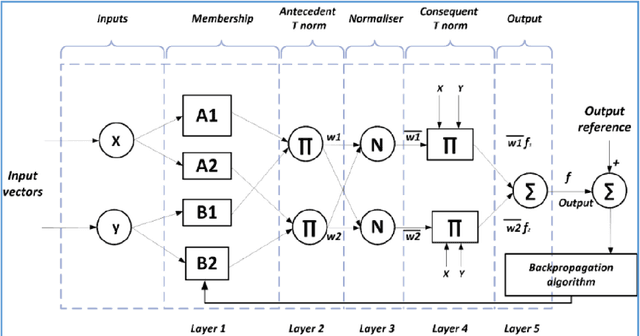

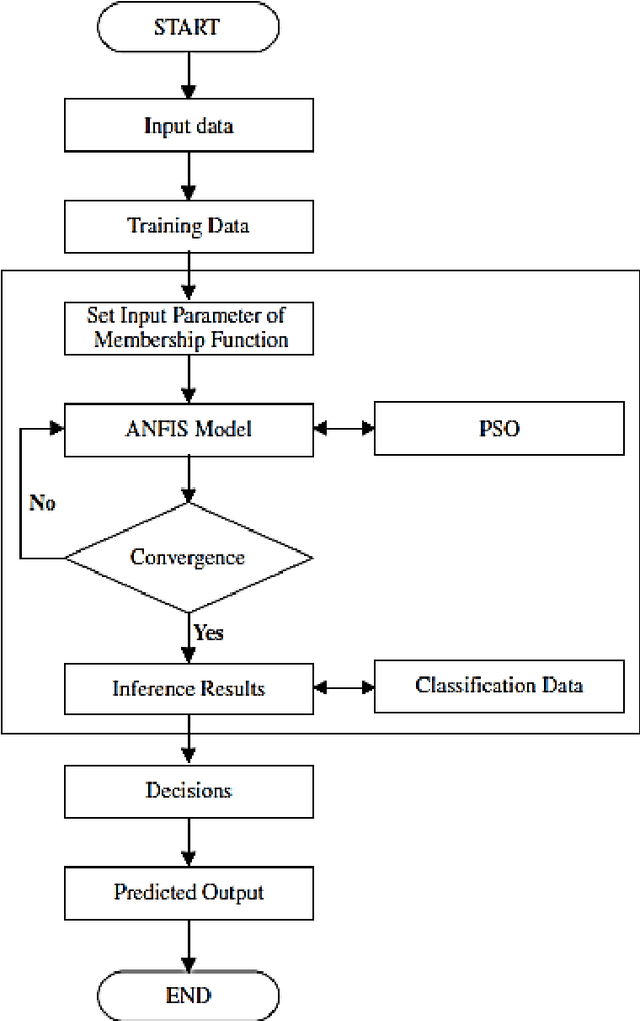
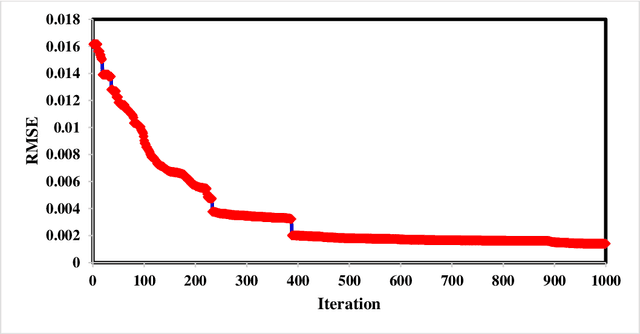
Abstract:Accurate prediction of mercury content emitted from fossil fueled power stations is of utmost important for environmental pollution assessment and hazard mitigation. In this paper, mercury content in the output gas of power stations boilers was predicted using adaptive neuro fuzzy inference system method integrated with particle swarm optimization. The input parameters of the model include coal characteristics and the operational parameters of the boilers. The dataset has been collected from a number of power plants and employed to educate and examine the proposed model. To evaluate the performance of the proposed ANFIS PSO model the statistical meter of MARE was implemented. Furthermore, relative errors between acquired data and predicted values presented, which confirm the accuracy of the model to deal nonlinearity and representing the dependency of flue gas mercury content into the specifications of coal and the boiler type.
Sensitivity study of ANFIS model parameters to predict the pressure gradient with combined input and outputs hydrodynamics parameters in the bubble column reactor
Jul 19, 2019



Abstract:Intelligent algorithms are recently used in the optimization process in chemical engineering and application of multiphase flows such as bubbling flow. This overview of modeling can be a great replacement with complex numerical methods or very time-consuming and disruptive measurement experimental process. In this study, we develop the adaptive network-based fuzzy inference system (ANFIS) method for mapping inputs and outputs together and understand the behavior of the fluid flow from other output parameters of the bubble column reactor. Neural cells can fully learn the process in their memory and after the training stage, the fuzzy structure predicts the multiphase flow data. Four inputs such as x coordinate, y coordinate, z coordinate, and air superficial velocity and one output such as pressure gradient are considered in the learning process of the ANFIS method. During the learning process, the different number of the membership function, type of membership functions and the number of inputs are examined to achieve the intelligent algorithm with high accuracy. The results show that as the number of inputs increases the accuracy of the ANFIS method rises up to R^2>0.99 almost for all cases, while the increment in the number of rules has a effect on the intelligence of artificial algorithm. This finding shows that the density of neural objects or higher input parameters enables the moded for better understanding. We also proposed a new evaluation of data in the bubble column reactor by mapping inputs and outputs and shuffle all parameters together to understand the behaviour of the multiphase flow as a function of either inputs or outputs. This new process of mapping inputs and outputs data provides a framework to fully understand the flow in the fluid domain in a short time of fuzzy structure calculation.
 Add to Chrome
Add to Chrome Add to Firefox
Add to Firefox Add to Edge
Add to Edge